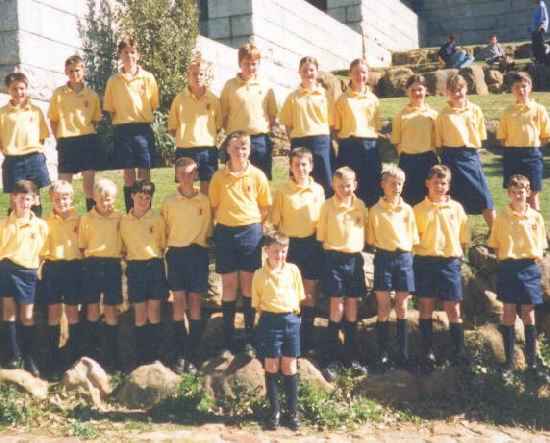
Figure 1.--This English school choir travels in their school uniform, but usually wears their dress uniform with ties and blazers with singing at a performance. |

|
Many English schools have had choirs and still do. This is the case at both single gender and coed schools. The same is true of both private and state schools. We think that they were more common at private than state schools, but our information is still limited. We believe that choirs were more common at grammar chools than secondary modern schools. Hopefully our English readrs will provide some background information here. Choirs are organized at both private and stat schools. These choirs very greatly in perfotmance ability. Some are casual choirs with the children practing only occassionally. Other schools have more organized choirs where the children make a much more substantial commitment of time. There is also substantial differences in the quality of the choral training. The choirs normally wear the ordinary school uniform. We are not yet sure about chronolgical trends. Many private schools have choirs. We are less sure about comprehensives. It appears that fewer boys are now interested in choirs than earlier. There are so many more leisure and academic opotunities for boys in our modern age--not the least being computer games. Comprehensives are coed schools and many girls seem more interested in participating in choirs.
Many English schools have had choirs and still do. School choirs were very popular in the first half of the 20th century. We believe this was more so than was the case in much of th 19th century, especilly the first hlf of the 19th cenury. In fact boy choirs until the 1850s were still a novelty in England. Price Albert was known o have made a trip to hear a new boys' cathedral choir. More is knon about the 20th century. Choirs have generally become less popular in the second half of the 20th century among boys who now have so many more options and demands on their time. Choirs remain , hwever, very popular with girls.
This is the case at both single gender and coed schools. Trends here may have also been affected by chronolgical trend as so many boys' schools became coed schools. It appears that fewer boys are now interested in choirs than earlier. There are so many more leisure and academic opotunities for boys in our modern age--not the least being computer games. Comprehensives are coed schools and many girls seem more interested in participating in choirs.
The same is true of both private and state schools. We think that they were more common at private than state schools, but our information is still limited. Many private schools (both preparatory and public schools) had choirs. We believe that schoirs were more common at grammar chools than secondary modern schools. The grammar schools often tried to use the public (private) schools as their models. Thus choirs were often encouraged. This does not seem to have been the case in secondary modern schools. Hopefully our English readrs will provide some background information here. We are less sure about comprehensives.
These choirs very greatly in performance ability. Some are casual choirs with the children practing only occassionally. Other schools have more organized choirs where the children make a much more substantial commitment of time. There is also substantial differences in the quality of the choral training.
We wonder if there were no regional differences among school choirs. We often, for example, associate the Welsh with school choirs.
The choirs normally wear the ordinary school uniform. We are not yet sure about chronolgical trends.
Here we are primarily collecting infornmation on school choirs, but we also notice some choir schools.
New College in Oxford is actually about 500 years old. Only in England could a 500 year old choir be called the New College Choir.
The Royal Hospital School near Ipswich, a school with strong naval traditions, costumes its boy choristers in a sailor-suit style outfit. This is the only English choir that HBC knows of that wears a sailor suit type costune.
Desmond Morse-Boycott's wonderful book, A Pilgrimage of Song describes his experiences as a choir director. He was an Anglo-Catholic priest in Somers Town,
a slum area of London, before the war and set up the St Mary-of-the Angels song school to train local boys as choristers. The boys were outfitted in Eton suits on Sundays and wore a practical blue smock at other times. They also wore a choristers robes with a
ruff. Later the school acquired residential premises out of London. Note the smock from this period (picture from the 1960s) with the tie worn hanging outside. The school closed in 1972.
Navigate the Historic Boys' Clothing Web Site:
[Introduction]
[Activities]
[Biographies]
[Chronologies]
[Countries]
[Style Index]
[Bibliographies]
[Contribution]
[FAQs]
[Biographies]
[Images]
[Links]
[Registration]
[Tools]
[Boys' Clothing Home]
Navigate the Historic Boys' Clothing Web choir costume pages:
[Return to the Main English choir page]
[Return to the Main national choir page]
[Australia]
[Austria]
[Belgium]
[Bulgaria]
[Canada]
[Denmark]
[France]
[Finland]
[Germany]
[Japan]
[Netherlands]
[Poland]
[South Africa]
[United States]
Navigate the Historic Boys' Clothing Web style pages:
[Short pants suits]
[Blazers]
[Collars]
[Lace collars]
[Ruffled collars]
[Eton collar]
[Fauntleroy suits]
[Sailor suits]
[Ring bearer/page costumes]
[First Communion suits]
